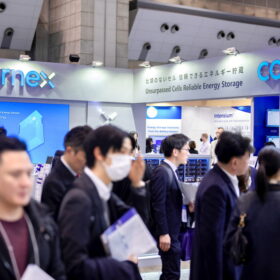China’s battery storage capacity doubles in 2024
Installed capacity exceeds 62 GW in China as the market shifts toward large, centralized systems with power outputs greater than 100 MW.
Poland’s $1 billion energy storage subsidy scheme opens for applications
The call for applications for the Electricity Storage and Related Infrastructure Programme, aimed at enhancing the stability of the Polish power grid, will remain open until May 30, 2025.
Largest ever UK pumped hydro scheme granted consent
Planning permission granted for 1.8 GW/ 40 GWh pumped hydro project in the Scottish Highlands. Developer Gilkes Energy says the real work begins now and is seeking “substantial capital” for the project.
Germany’s 50Hertz opens up reactive power market to renewables, battery storage
With regulator the Federal Network Agency requiring grid companies to tender for the provision of the reactive power needed to maintain network voltage, electricity transmission system operator (TSO) 50Hertz has stolen a lead on its rivals.
The Hydrogen Stream: Just 17% of EU hydrogen projects likely on track
Westwood Global Energy Group says just 17% of the European Union’s hydrogen projects will advance without intervention, while Smartenergy says Spain’s Orange.bat project has cleared a key environmental hurdle and will launch in May 2028.
Cornex unveils 472 Ah LFP cell enabling more than 7 MWh in a 20-foot container
The Chinese battery maker has launched its next-gen lithium iron phosphate cell which can be integrated with both 1,500 V and 2,000 V platforms. It plans to establish mass production by June 30 with an annual manufacturing capacity layout of more than 80 GWh.
Europe’s energy storage fleet reaches 89 GW
The fleet of energy storage projects in Europe, including both pumped hydro and battery energy storage systems of all sizes, is expanding rapidly. This growth is set to continue at a strong pace through 2030, fueled by technological advancements, supportive policies, and other key factors.
European utility-scale battery installations ‘ramping up’ as solar cannibalization bites, Rystad finds
With electricity market volatility increasing in many European countries, the opportunity for battery energy storage is expanding fast. Market analyst Rystad Energy expects battery installations to accelerate as project developers with falling solar capture prices and increasing frequency of negative price events.
Mexico announces battery storage mandate for renewable energy plants
A month after India introduced an energy storage mandate for renewable energy plants and China scrapped its own, Mexico has stepped forward with an ambitious 30% capacity requirement, alongside plans to add a further 574 MW of batteries by 2028.
The Hydrogen Stream: Trafigura drops $471 million green H2 plan in Australia
Trafigura says it has scrapped plans for a $471.2 million green hydrogen plant in Australia after a feasibility study, while Aurora Energy Research says Germany, Spain, Sweden, and Great Britain could drive over 50% of renewable energy demand by 2035, requiring €100 billion in investment.









